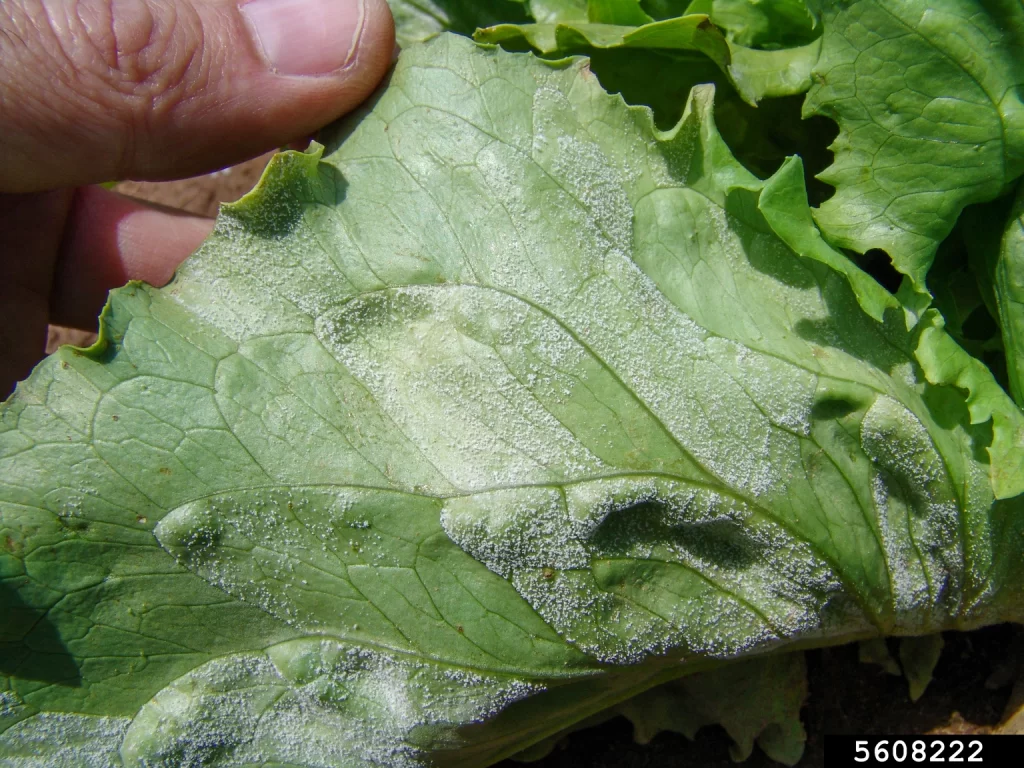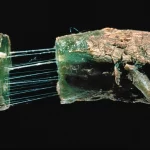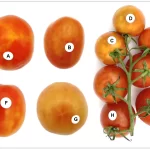Bremia lactucae
Introduction
Bremia lactucae causes lettuce downy mildew for both indoor and outdoor lettuce. It is a significant pathogen in cooler environments like late-fall seasons and heated winter greenhouses. This plant pathogen is an oomycete, and symptoms of the disease are similar to late blight. However, the disease may appear as white fungal growth on the leaves, which can be mistaken for powdery mildew [1].
The economic impact of Bremia lactucae is multifaceted. It includes direct costs associated with the application of fungicides or prevention methods, the purchase of resistant seed varieties, and potential yield losses due to infection. Indirect costs may arise from the need for additional labour to manage and monitor the disease and the loss of marketability of infected crops. The pathogen’s ability to rapidly evolve and overcome resistance genes further complicates management and can lead to unexpected outbreaks. [1][2].
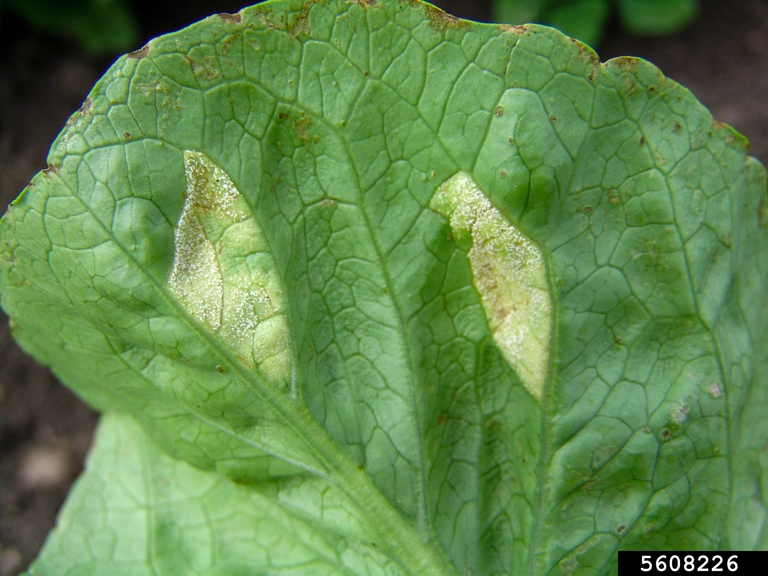
|
Hosts |
Susceptibility |
|
Lettuce |
High |
|
Artichoke |
Low (host-specific forms) |
|
Cornflower |
Low (host-specific forms) |
|
Strawflower |
Low (host-specific forms) |
| Endive | Low (host-specific forms) |
We provide great overviews of many agricultural microorganisms. Subscribe to stay updated!
Symptoms
Bremia lactucae causes light green to yellow angular spots on the upper surfaces of lettuce leaves, which can turn brown and dry up as the disease progresses. The pathogen produces a white, fluffy growth on the lower sides of these spots. Older leaves are typically attacked first, and the leaves may die in severe cases. The disease can also become systemic, leading to dark discoloration of stem tissue [2].
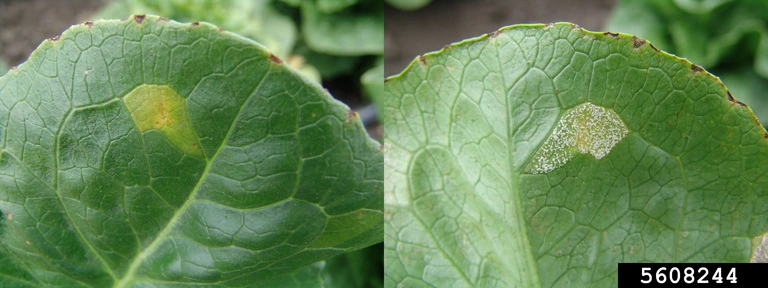
Life Cycle and Infection Stages
The life cycle of Bremia lactucae involves both asexual and sexual stages. The asexual reproduction occurs through sporangia, which can germinate directly without producing zoospores. The pathogen is an obligate biotroph, requiring living host tissue to grow and reproduce. Infection stages include spore germination, penetration of host tissue, and the establishment of the pathogen within the plant, producing new sporangia that can disperse and infect additional plants [1][3].
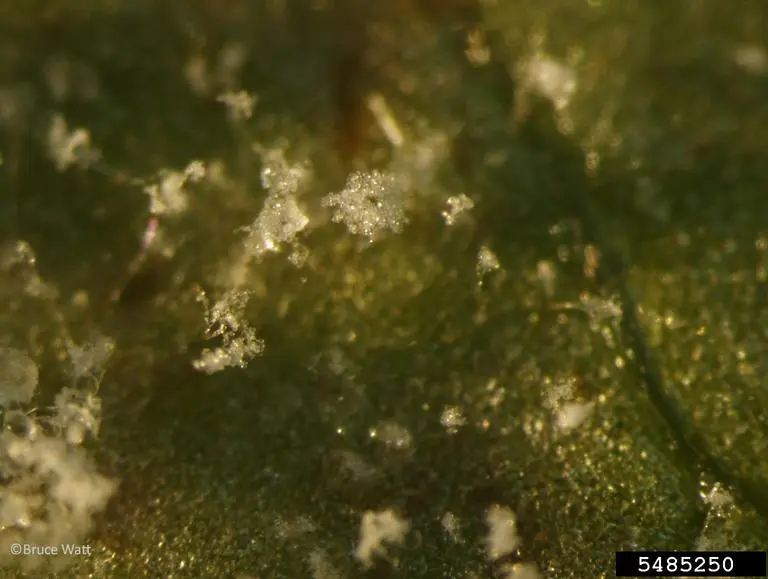
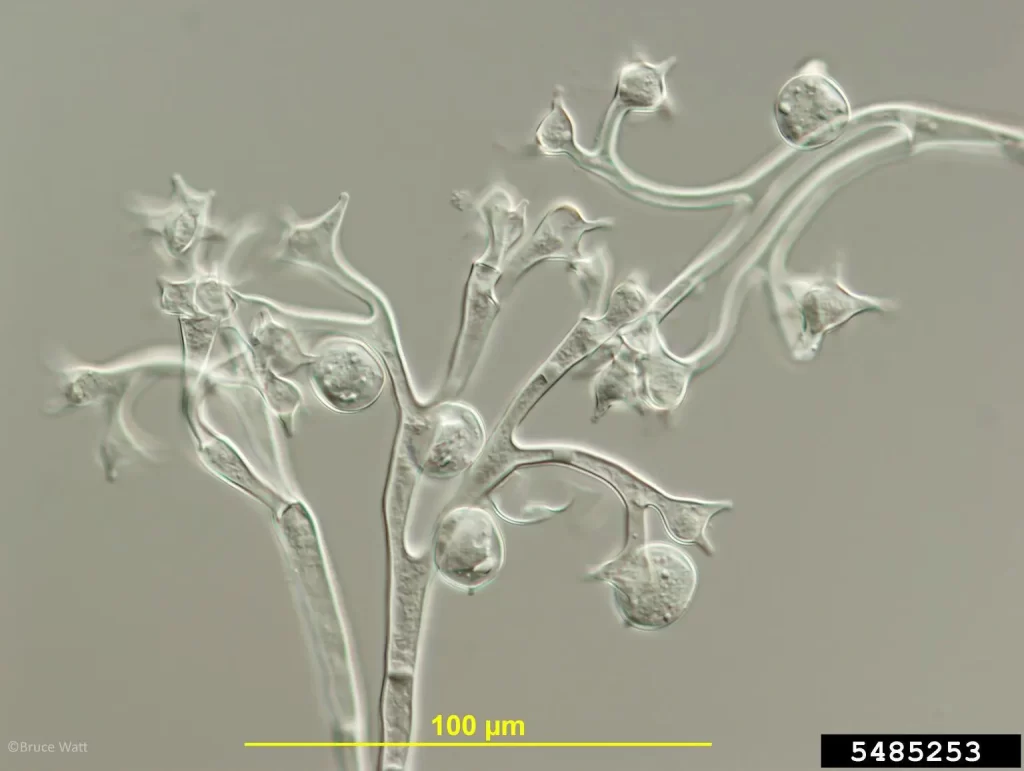
Growth Conditions for Bremia lactucae
Bremia lactucae thrives in cool, damp environments with high humidity, which are conditions often found in greenhouses or during cool seasons. Leaf wetness is a critical factor for infection, and the pathogen’s spores are dispersed by wind during moist periods. The optimal temperature range for infection is between 10°C and 20°C, with a minimum leaf wetness duration of 2 hours sufficient for infection under certain conditions [4][5].
Methods of Prevention and Control
Prevention and control methods for Bremia lactucae include:
- Reducing leaf wetness and humidity through irrigation systems like drip irrigation to decrease disease severity
- Implementing crop rotation and destroying crop residues to reduce pathogen survival between crops
- Using quality seed and avoiding the introduction of the pathogen through contaminated transplants
Conclusion
Bremia lactucae poses a significant challenge to lettuce production. Understanding its life cycle, infection process, and favourable growth conditions is essential for developing effective management strategies. While resistant cultivars and fungicides for outdoors are vital tools in controlling lettuce downy mildew, the pathogen’s ability to adapt requires continuous monitoring and adaptation of control measures. As the agricultural industry moves towards more sustainable practices, integrated management approaches that combine cultural, biological, and chemical strategies will be crucial in managing this pathogen and ensuring the economic viability of lettuce production.
Disclaimer
The information we present in Pathogen Profile is based on collating published peer-reviewed scientific literature, and sources we think are reliable. This is by no means an exhaustive review of pathogens. Pathogen Profile gives a small glimpse of what is known about pathogens. We encourage growers to do more research on the pathogens concerning their crops and hydroponic systems. We are not plant pathologists; thus, the information presented in the Pathogen Profile should not be used as professional advice to treat pathogens or operate your system.
References
[1] Scheufele, S. (2021, December). Lettuce Downy Mildew. UMass Extension Vegetable Program. Retrieved from https://ag.umass.edu/vegetable/fact-sheets/lettuce-downy-mildew
[2] Koike, S. T. (Emeritus), Turini, T. A., & Davis, R. M. (Emeritus). (2017, April). Downy Mildew of Lettuce. UC Cooperative Extension Fresno County & TriCal Diagnostics, Hollister. Acknowledgement for Contributions to Diseases. University of California Statewide Integrated Pest Management Program. Retrieved from http://ipm.ucanr.edu/PMG/r441100111.html
[3] Fall, M. (2016, March). A Quantitative Dynamic Simulation of Bremia lactucae Airborne Conidia Concentration above a Lettuce Canopy. PLoS ONE, 11(3). https://doi.org/10.1371/journal.pone.0144573
[4] Fall, M. L., Van der Heyden, H., Beaulieu, C., & Carisse, O. (2015). Bremia lactucae Infection Efficiency in Lettuce is Modulated by Temperature and Leaf Wetness Duration Under Quebec Field Conditions. Plant Disease, 99(7), 1010–1019. https://doi.org/10.1094/PDIS-05-14-0548-RE
[5] Padgett-Johnson, M., & Laemmlen, F. (n.d.). DOWNY MILDEW OF LETTUCE (Bremia lactucae): Biology, Disease Symptoms and Damage. Using the Downy Mildew Index Model for Disease Management. Retrieved from https://cesantabarbara.ucanr.edu/files/75296.pdf
Banner image by Gerald Holmes, Strawberry Center, Cal Poly San Luis Obispo, Bugwood.org. https://www.invasive.org/browse/detail.cfm?imgnum=5608222&# https://apsjournals.apsnet.org/doi/10.1094/PDIS-10-14-1068-FE
![]()
David Santos is the CMO of Healthy Hydroponics InnoTech


